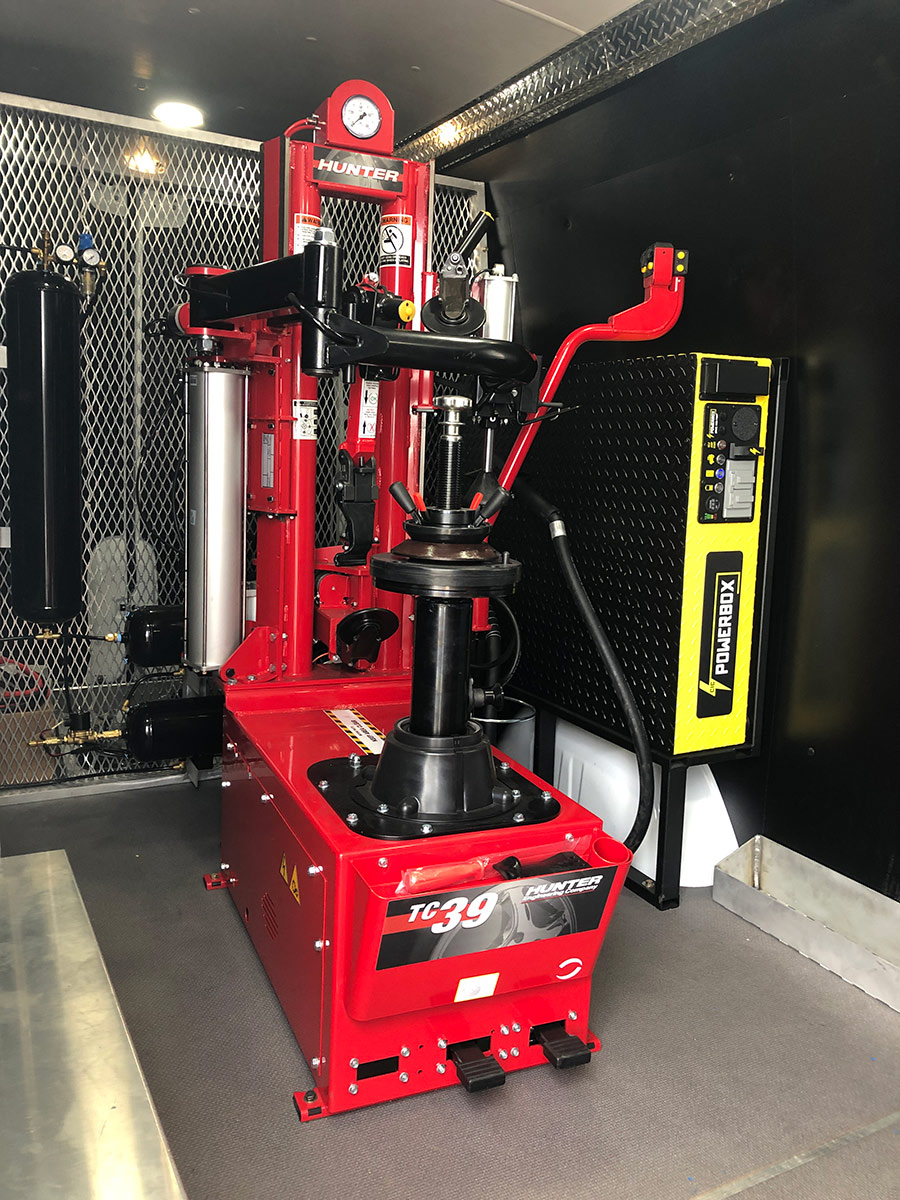Tire Solution: Proven Techniques for Optimal Tire Maintenance and Treatment
From guaranteeing correct tire stress to normal rotation and placement, there are proven approaches that can substantially prolong the life-span of your tires and enhance total driving experience. Allow's delve right into the world of tire solution and find the tricks to keeping your tires in first-class form for the long haul - Mobile Tire Repair Las Vegas.
Importance of Tire Stress
Correct tire pressure is a critical factor in making certain ideal lorry efficiency and safety when traveling. Keeping the advised tire stress degrees offered by the maker offers numerous advantages. To start with, appropriate tire stress promotes much better gas effectiveness, as under-inflated tires can cause boosted rolling resistance, triggering the engine to function more difficult and consume even more fuel. Right tire pressure makes sure even walk wear, enhancing tire longevity and conserving cash in the long run by postponing the demand for premature replacements. Furthermore, effectively blew up tires add to enhanced handling and stopping abilities, crucial for safe driving in different road problems. Over-inflated tires, on the other hand, can cause decreased traction and a harsher ride. On the other hand, under-inflated tires are susceptible to getting too hot, which can bring about blowouts and accidents. On a regular basis changing and inspecting tire pressure, specifically eventually trips, is a basic yet efficient method to enhance automobile performance, prolong tire lifespan, and prioritize safety on the roadway.
Tire Turning Standards
When thinking about tire rotation standards, it is vital to recognize the relevance of this upkeep job in making best use of tire life expectancy and preserving ideal car performance. Tire rotation entails changing the placement of each tire on a car to guarantee even tread wear. Front tires have a tendency to use quicker than back tires as a result of steering forces, making regular turning important for well balanced wear patterns. The advised turning pattern varies relying on whether a lorry is front-wheel, rear-wheel, all-wheel, or 4x4. Generally, tires should be rotated every 5,000 to 7,500 miles, or as encouraged in the car handbook. Neglecting tire turning can cause uneven wear, impacting handling, grip, and possibly compromising vehicle security. By sticking to proper turning standards, drivers can expand the life of their tires, improve fuel performance, and boost general driving experience. Routine rotation is a straightforward yet reliable maintenance practice that adds significantly to tire longevity and automobile performance.
Advantages of Wheel Positioning
Ensuring correct wheel alignment after tire turning is essential for keeping balanced wear patterns and optimizing vehicle efficiency. Additionally, right wheel positioning assists to extend the lifespan of your tires. Misaligned wheels can trigger irregular tire wear, leading to premature tire substitute and enhanced upkeep expenses.

Tire Footstep Deepness Examine
Executing a routine examination of tire tread deepness is necessary for keeping risk-free driving conditions and prolonging the lifespan of your tires. The step on your tires plays a critical role go to the website in giving traction, especially in wet or unsafe problems. To examine your tire tread depth, you can make use of a walk web depth gauge or the penny test. The recommended tread deepness goes to the very least 2/32 of an inch. If the walk deepness is listed below this threshold, it is time to change your tires to make certain optimal efficiency and safety on the road. Unequal step wear can indicate problems with tire suspension, stress, or alignment, highlighting the significance of normal step depth checks. Neglecting to check and keep correct tread depth can bring about minimized grasp, longer stopping ranges, and a raised danger of hydroplaning. By incorporating tire tread deepness look into your regular maintenance timetable, you can drive with self-confidence recognizing that your tires are in top problem.
Seasonal Tire Examination
Seasonal tire assessment is an essential element of tire maintenance that guarantees tires are ready to face the difficulties presented by various weather conditions. In preparation for winter, it is necessary to examine the tire pressure regularly as cold temperature levels can cause tire pressure to drop. By conducting routine seasonal tire inspections, chauffeurs can lengthen tire lifespan, boost fuel performance, and most significantly, ensure a safe and secure driving experience in varying weather conditions.
Conclusion
In conclusion, keeping appropriate tire stress, turning tires routinely, lining up wheels properly, checking tread depth, and carrying out seasonal assessments are essential techniques for ideal tire treatment. By adhering to these confirmed approaches, chauffeurs can guarantee their tires last much longer, carry out much better, and add to general car safety. It is crucial to prioritize tire upkeep to avoid crashes, improve gas effectiveness, and lengthen the life expectancy of tires.
Sufficient tire stress promotes much better fuel efficiency, as under-inflated tires can lead to boosted rolling resistance, creating the engine to work tougher and take in even more fuel.When considering tire rotation guidelines, it is important to understand the importance of this upkeep task in optimizing tire life-span and keeping optimum automobile efficiency. anonymous Seasonal tire examination is a basic facet of tire maintenance that ensures tires are ready to deal with the challenges presented by various weather condition conditions. By performing regular seasonal tire assessments, chauffeurs can prolong tire lifespan, enhance gas effectiveness, and most significantly, ensure a safe and secure driving experience in varying climate problems.
In verdict, preserving proper tire stress, turning tires consistently, aligning wheels appropriately, monitoring walk deepness, and carrying out seasonal examinations are essential practices for optimal tire treatment.